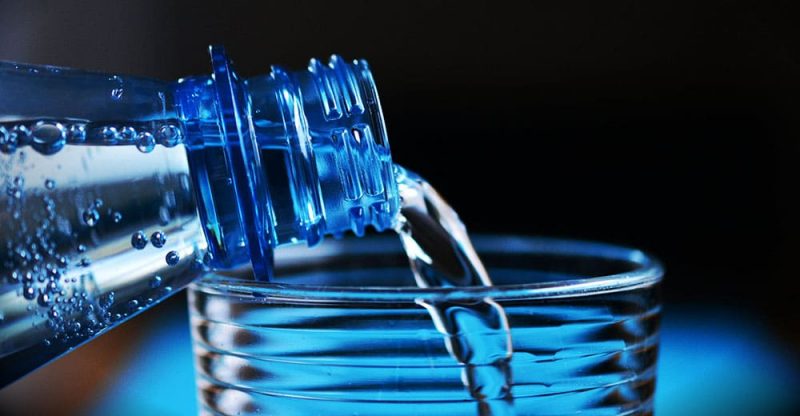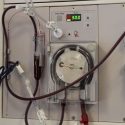What is Potassium Bicarbonate E501(ii) and its Uses in Baking, Effervescent tablets, Soda water and More

Supplement | Baking | Soda water | Winemaking | Effervescent tablets | Fungicides | Fire extinguisher
Potassium bicarbonate or potassium hydrogen carbonate, is an alkaline with the chemical formula KHCO3, when used in food, it has the European food additive number E501(ii). It is a white powder or granular that tastes slightly salty.
This ingredient can be used as a leavening agent and as a low-sodium replacement for sodium bicarbonate in baked goods, as a potassium supplement, as a acidity regulator in wine & soda water, as a disintegrant in effervescent tablets, as a fungicide to destroy fungus and mildew for plants, as a feed additive, as a dry fire extinguisher and so on.
How is Potassium Bicarbonate Made?
Potassium bicarbonate is commercially produced by the reaction of potassium carbonate or potassium hydroxide solution with carbon dioxide. Following is the chemical equation: K2CO3 + CO2 + H2O = 2KHCO3 or KOH + CO2 = KHCO3
Properties
| Other names | Potassium hydrogen carbonate; Acid potassium carbonate; Carbonic acid, monopotassium salt |
| CAS number | 298-14-6 |
| Chemical formula | KHCO3 |
| Molecular weight | 100.12 |
| PH | Approximately 8.2 (1% solution at 25°C) |
Solubility
Freely soluble in water with the solubility 332 g/L at 20ºC. Insoluble in ethanol. KHCO3 dissociates potassium cation (K+) and bicarbonate anion (HCO3–) when dissolved in water. KHCO3 ===> K+ + HCO3–
HCO3- is amphoteric and exists the following carbonic acid equilibria:
- HCO3- + H2O <===> H2CO3 + OH-
- HCO3- <===> H+ + CO32-
Decomposes to K2CO3 , H2O, and CO2 at 156°C (1). This property is used to produce potassium carbonate.
Alkalinity
A buffer with mild alkalinity, less caustic than hydroxides and carbonates, more gentle than potassium carbonate for controlling neutralization with acid.
What’re the Uses of Potassium Bicarbonate?
In food, potassium bicarbonate is mainly used as a raising agent or leavening agent in baking, and an acidity regulator in winemaking and soda water.
Its market demand has increased dramatically in the USA and Europe since 2014, mainly driven by the application in baking and feed.
It can also be used as a source of potassium, a disintegrant in effervescent tablets, a fungicide to treat powdery mildew, high-quality water-soluble fertilizer, fire extinguishing agent, and etc.
Supplement
It can be regarded as a source of potassium and thus can be used as a potassium fortification in supplements.
As you may know, potassium is an essential element and an electrolyte that our body needs, for example with the following benefits:
- regulating blood pressure
- maintaining bones strength & muscle function
- supporting cardiovascular health
- participating in certain neurological mechanisms and other activities
Baking
Food grade potassium bicarbonate can increase dough volume by releasing carbon dioxide through the reaction with leavening acid (such as monocalcium phosphate, sodium acid pyrophosphate, sodium aluminum phosphate, sodium aluminum sulfate, glucono delta-lactone, aluminum potassium sulfate) in baking powder.
It may be found in the ingredients list of bakery food, such as in biscuits, cookies, muffins, pancakes, and crackers.
In baking, its mechanism of producing carbon dioxide is the same with baking soda, by reacting with leavening acids and through heat decomposition as shown in the following two chemical reactions:
- KHCO3 + H+ = K+ + CO2 + H2O
- 2KHCO3 = K2CO3 + CO2 + H2O
Potassium bicarbonate Vs sodium bicarbonate?
Both are bicarbonate base and with similar functions in food, but we always think of baking soda when it comes to bicarbonate.
Potassium bicarbonate does not contain any sodium and can be used as a substitute of sodium bicarbonate (baking soda) to lower the sodium content.
Their difference is that potassium bicarbonate is used less than the latter in baking as it brings an undesirable taste, and more quantity is needed to produce equal carbon dioxide. Plus, it is highly hygroscopic, this property makes it difficult to store.
Soda water
Soda water, also known as carbonated water or sparkling water, is water forced with carbon dioxide under pressure for the purpose of fizz and refreshment.
Potassium bicarbonate can be added to bottled water to enhance the water taste (2) by increasing the PH. You can find this ingredient in Coca Cola’s of Seagrams Club Soda (3) and Smartwater Sparkling (4)
Winemaking
Potassium bicarbonate is an alkaline that can be used as a pH regulator to reduce the acidic taste (tartaric acid) in wine and therefore improve the flavor in winemaking. It can also be added to your coffee to make it less acidic with the same property.
Pharmaceuticals
It can be used as a potassium electrolyte replenisher to prevent or treat low blood levels of potassium (hypokalemia), also an antacid to neutralize gastric acid.
Plus, it acts as an excipient in effervescent tablets. Different from ordinary tablets, effervescent tablets use the combination of acidulants (e.g. citric acid, malic acid) and carbonate or bicarbonate salts (e.g. potassium bicarbonate) as a disintegrant.
The mechanism is that when place a effervescent tablet in water, the reaction between acidulents and alkalines generates and produces a large amount of carbon dioxide gas, the phenomenon like boiling. This process makes the tablet disintegrate and the active ingredients dissolved in vitro quickly, which results in a quick absorption of active ingredients into the blood, thereby achieving a quick action and high-efficiency of a drug in our body.
Fungicides
It is used as a fungicide and best suitable to control powdery mildew diseases and useful in prevention of other diseases (for example, alternaria, anthracnose, black dot root rot, botrytis blossom and twig blight, botrytis bunch rot) on various vegetables and fruits. (5)
It functions as an active ingredient in pesticide products by diluting with water and sprayed on foliage of plants.
Fertilizer
Potassium hydrogen carbonate can be used to reduce acidity in soil and help crop growth in agricultural applications. Also improve the soil absorption of potassium, and synergy with phosphate fertilizers.
Feed
It is added as a nutritional supplement to animal feed to prevent potassium deficiencies and increase feed consumption and therefore enhance weight gain in livestock. It is also a rumen buffer in the form of bicarbonate.
Fire extinguisher
Potassium bicarbonate is a dry chemical fire extinguisher which is primarily used on Class B (flammable liquids and gases) and Class C (electrical) fires. (6)
The mechanism of potassium bicarbonate puts off fire mainly by the way of releasing carbon dioxide under pressure, which reduces the oxygen concentration around combustibles and in addition, it will quickly evaporate from the condition from liquid to gas, and thus absorb some heat from the surroundings to cool down the burning objects.
Is Potassium Bicarbonate Safe to Eat?
Yes, it almost has no side effects and its safety when used as a food additive has been approved by the FDA, EFSA and JECFA and other authorities.
FDA
Potassium bicarbonate is generally recognized as safe (GRAS) as a direct human food ingredient. It is used as a formulation aid, nutrient supplement, pH control agent, or processing aid in food with no limitation other than current good manufacturing practice. (7)
EFSA
Potassium bicarbonate E501(ii) is listed in Commission Regulation (EU) No 231/2012 as an authorised food additive and categorized in “Additives other than colours and sweeteners” (8).
JECFA
Function Class: food additives, acidity regulator, leavening agent, raising agent. (9)
Acceptable daily intake: ADI “not limited” was set in 1965. (10)
What’re the possible Side Effects of Potassium Bicarbonate?
Potassium bicarbonate is a naturally occurring inorganic compound that can be found in humans, other animals, plants, soils, water, rocks and etc. It is not associated with adverse effects to humans. (11)
Conclusion
Now you may have a knowledge of the multifunctional ingredient – Potassium Bicarbonate E501(ii), from the following aspects:
- Production process
- Uses in supplement, baking, soda water, winemaking, effervescent tablets, fungicides, and fire extinguisher
- Comparison with baking soda
- Safety
What kinds of food labels have you found this ingredient in? Let me know in the comments.



It is found in Cacao powder produced by Dr. Oetker.
I use this product very frequently. I hope it is not dangerous, not even for children.